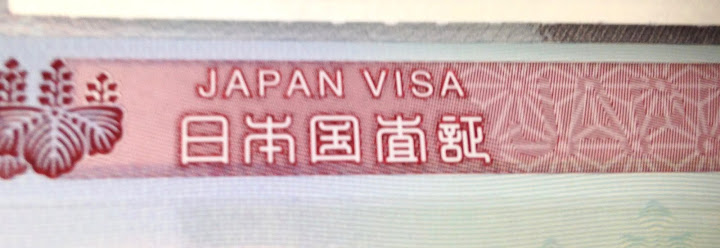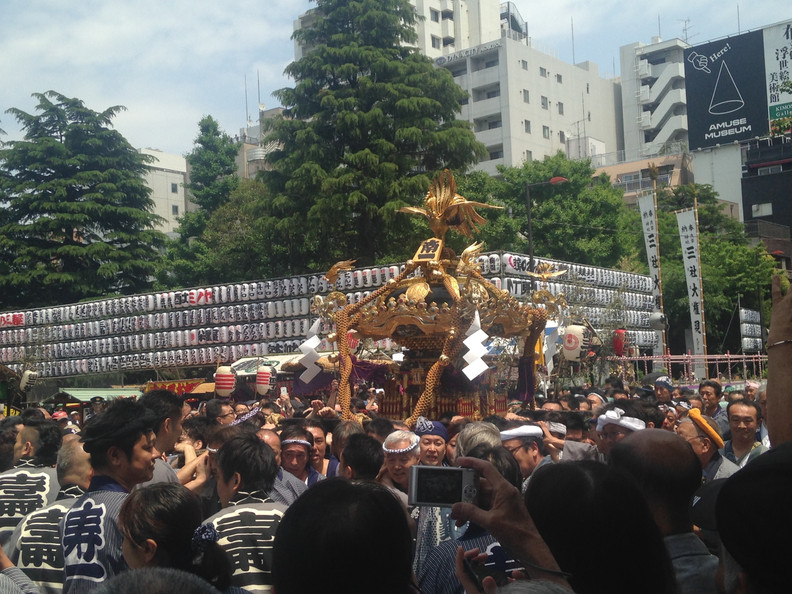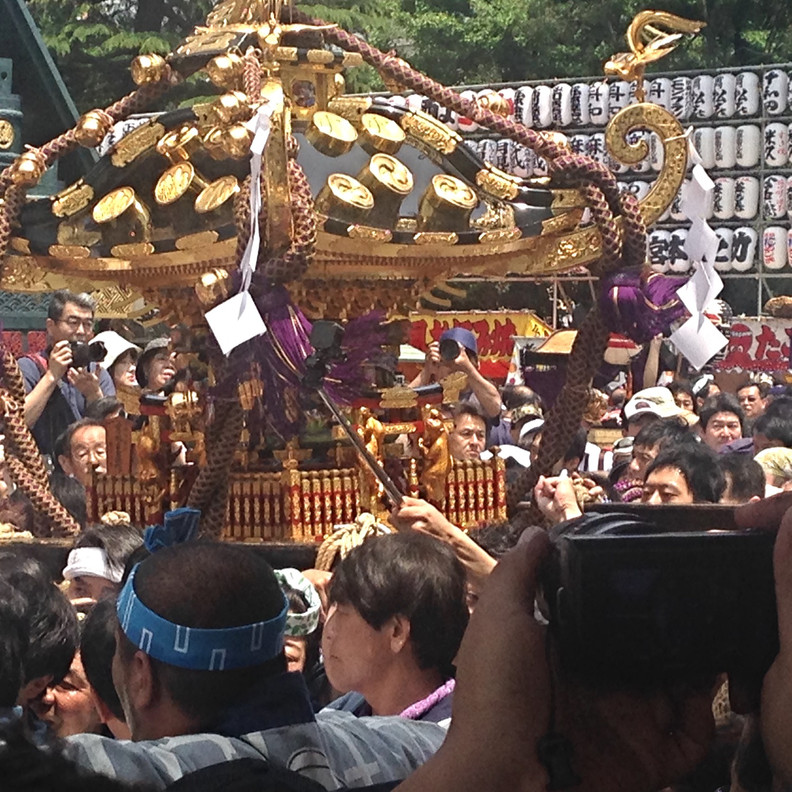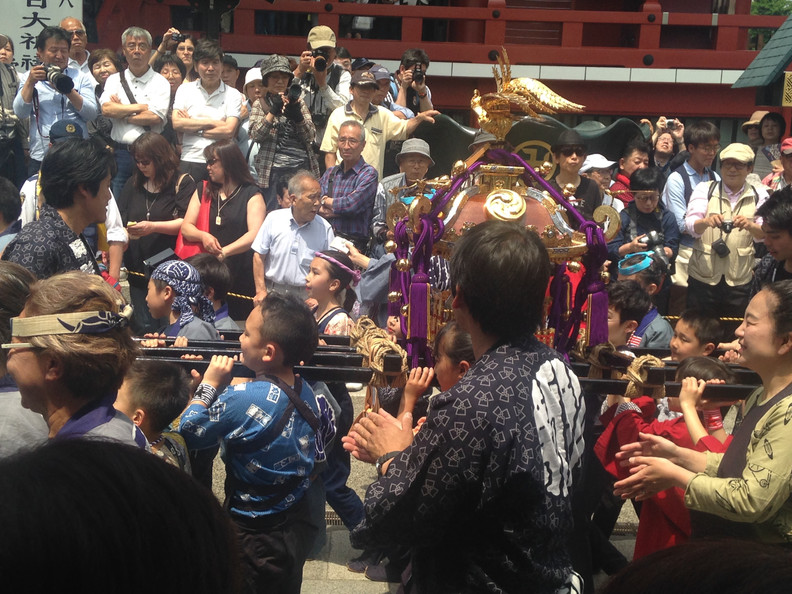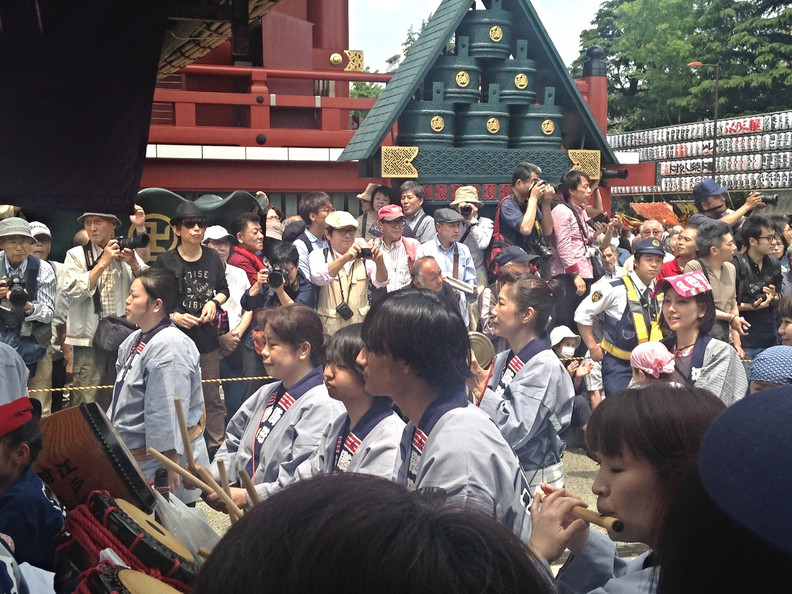 |
| Picture of poster. What it's supposed to look like. |
Tuesday, May 3, 2016
It’s that time of year in Japan when the wisteria is in bloom. Though almost as popular as its famous floral cousin, the Cherry Blossoms, wisteria is not nearly as easy to find in Tokyo. Many parks have one or two wisteria plants but there are only a couple of places we discovered that promised an impressive amount of the beautiful flower.
Kameido Tenjin Shrine was the closest and listed as the best place in Tokyo to see the flower— and it also was celebrating with a Wisteria Festival from the middle of April to the middle of May.
We got off at Kameido Station and followed Google Maps through some small side streets—finding nice little surprises along the way. I especially loved this main shop district street with all the banners and fish flags celebrating the impending Boys Day.
We walked past this area and followed the Wisteria Festival flags down the main streets until we found the shrine. The park area consisted of a large pond, wisteria trellises, a shrine, and an arched bridge. Because the festival was going on, multiple food vendors were set up around the pond area. But sadly the wisteria blossoms were mostly dried-out husks. Word to the wise: go in April for best results. It was still pretty to see, however.
Thursday, May 5, 2016
After being disappointed by our trip to the Tokyo-based wisteria, we decided we couldn’t wait any longer to head out to the big daddy of them all in wisteria displays: Ashikaga Flower Park. To get to this park, it involves many forms of transportation and takes anywhere from 2-3 hours to get there from where we are. It was a commitment.
I do not suggest this trip for the weak of heart or for those who are just looking for something to do. As, I mentioned before: only the committed and true wisteria lovers should attempt.
First off, when trying to figure out the train/subways to get there we got answers that ranged the gamut from $19- 50 ow and multiple choices that changed EVERY single time we looked it up. It was exhausting before we even left our apartment.
We picked one of the choices that took us to Kitasenju Station to grab a train—which, it turned out, was not listed on any of the signs. We finally asked a train station worker who directed us ‘to follow the blue line and go down two floors.’ We Finally found it, bought a separate ticket for the Ryomo semi express train at approximately $16 to go the two stops. But first we had to wait 40 minutes for the train to come. (On the way back: we just took the regular subway trains, bypassed this step, and saved ourselves time, money and heartache.)
After boarding the Ryomo, followed by two other train lines, we exited at Tomita Station. However, from Tomita Station, it is another 15-minute walk or so along the highway (directions are available to print out from the
Ashikaga Flower Park website—but you can also just follow the huge crowd of people). Perhaps if you arrived very early and had no crowd to follow, you may wish you had the directions, but we didn’t arrive until almost 4pm(!) so there were plenty of people to follow.
The park is home to quite a few huge wisteria trellises—two of them over 150-years old! Not only do they have the usual purple wisteria (best in Late April – Early May), but they also have a pale pink one (best in Mid – Late April), white ones (best in Early May), and a yellow Laburnum which grows on an arched trellis and looks very wisteria-like (best in Early – Mid May). And right on schedule the pale pink wisteria blossoms were just like the ones at Kameido Tenjin Shrine—dried out. Though a little disappointed in these, the rest were so beautiful it didn’t matter. And, the huge canopy was still green and provided the atmosphere—though it must have been even more beautiful a few days before.
The map lists the wisterias as: a Large Wisteria Trellis (1000 m in size!), a rare Double Flowered Wisteria, a Large and Long Wisteria Trellis, a Tunnel of White Wisteria, a Tunnel of Golden Chain, a Screen of Purple Wisteria, White Wisteria Falls, Light Pink Trellis, Wisteria Dome, and a Purple Wisteria Trellis. These do not include the little random wisteria bushes scattered throughout, or the Azaleas, roses, and other flowers scattered throughout. There were even some that looked an awful lot like the California Poppies of home.
During the wisteria season, the park also stays open late and they turn the lights on at 6pm to give the plants a whole different look. The lights really make the colors pop and everything looks different in the twilight.
This Ashikaga Flower Park is open all year except for the third Wednesday and Thursday of February, and December 31. The flowers change during the year and there is a beautiful garden of Illuminations in the winter. Entrance fees vary depending on the quality and quantity of blooms. Check schedules on their website for late night hours because as I said it took us hours to get there. You want to give yourself at least two hours there.
The park was rated one of the Top10 International Dream Destinations in 2014 by CNN. And deservedly so. It’s worth the hardship to get there.
